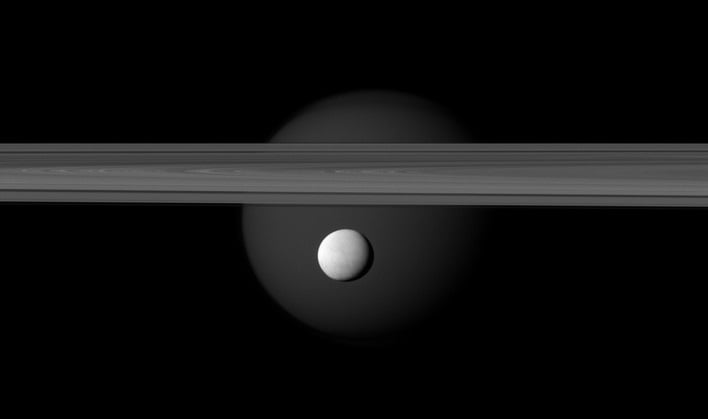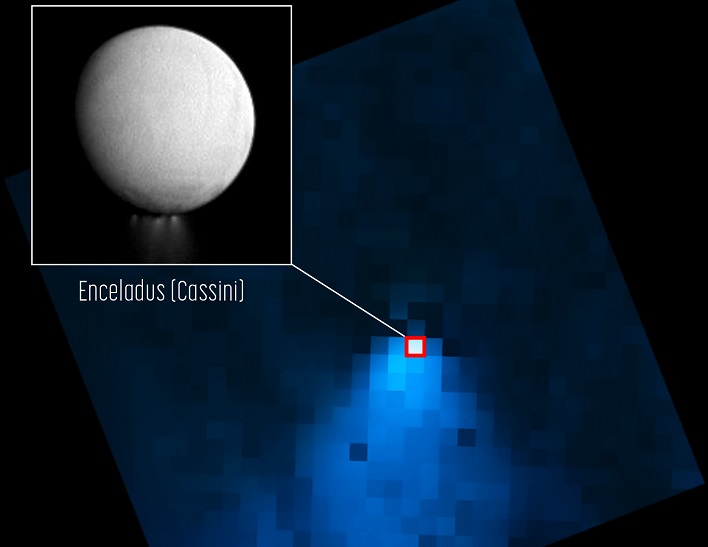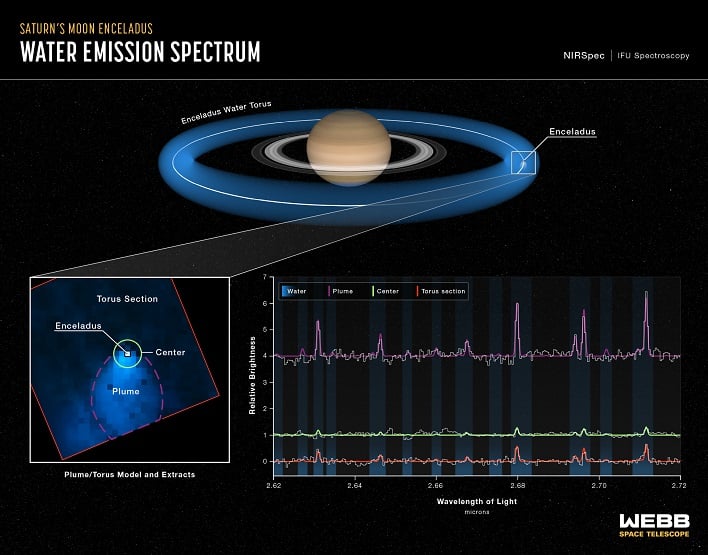JWST Discovers Wild 6K Mile Water Plume Gushing From Saturn's Moon, Why This Matters

Scientists and astronomers have known for some time that jets of ice and water vapor emanate from the south pole of Enceladus. The plumes occur as geyser-like volcanos gush jets of ice particles, water vapor, and organic chemicals out of crevices, called 'tiger stripes', in the moon's icy outer crust . It also makes it one of the most exciting scientific targets in our solar system, according to NASA. Previously, observatories had captured images of jets hundreds of miles from Enceladus' surface. A new image from Webb, however, reveals a plume that is nearly the distance from Los Angeles, California to Buenos Aires, Argentina.

Not only was the extent of the plume impressive to researchers, but also the fact that the water vapor was "gushing out" at about 79 gallons per second. NASA says at this rate you could fill an Olympic-sized swimming pool in just a couple of hours, as opposed to filling it with a water hose here on Earth which would take more than 2 weeks.
Enceladus' orbit around Saturn only takes 33 hours. This quick orbital pace leads to the moon and its jets "basically spitting off water, leaving a halo, almost like a donut, in its wake," Villanueva explained. He added that not only was there a very large plume, but water was everywhere.

"Right now, Webb provides a unique way to directly measure how water evolves and changes over time across Enceladus' immense plume, and as we see here, we will even make new discoveries and learn more about the composition of the underlying ocean," remarked co-author Stefanie Milam at NASA Goddard. "Because of Webb's wavelength coverage and sensitivity, and what we've learned from previous missions, we have an entire new window of opportunity in front of us."
The research team's findings can be viewed on the Nature Astronomy website.

